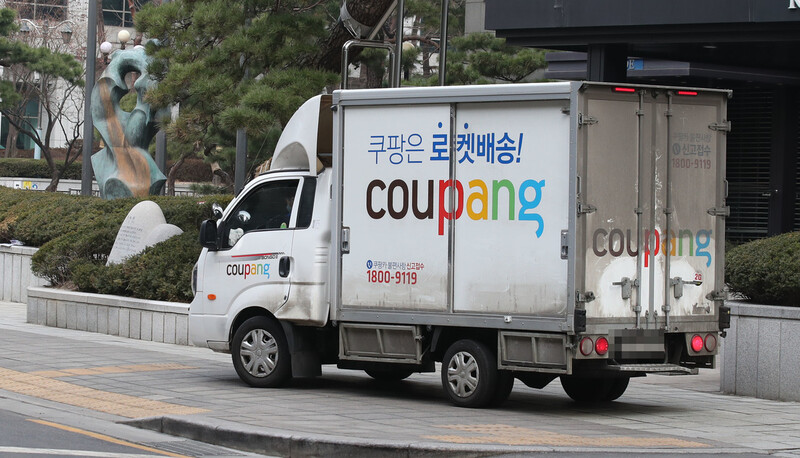 material photo” alt=”
material photo” alt=”<한겨레> Material photo
In the background of Coupang’s’operating cash flow’ turning to’plus’ (inflow) last year, it was found that’accurate settlement of accounts receivable’, in which the cost of purchasing goods is paid up to two months later. Late settlement was one of the main complaints of small business owners selling goods in Coupang. The Coupang side and some of the industry have interpreted the improvement in cash flow as a positive sign of the sustainability of the business despite the deficit march.

Coupang’s parent company, Coupang Llc (LLC), submitted to the Securities and Exchange Commission (SEC) on the 15th. Securities ReportLooking at, Coupang’s operating cash flow last year was $31.5 million (about 351.5 billion won), an increase of $63.39 million from the’minus’ $311.84 million (about 3584 billion won) in 2019. The company’s operating cash flow has been converted from outflow to inflow in six years since rocket delivery began in 2014. Operating cash flow is an indicator that shows the inflow and outflow of cash that occurs purely through operating activities, excluding investment and financial activities. Because of this, the inflow conversion of this indicator was interpreted as a sign that Coupang’s business could run stably without the need for transfusion of external funds such as loans or capital increase. Looking at the details, this interpretation seems clear. This is because the item that has increased operating cash flow the most in one year is’trade payables’. Trade payables refer to the’account value’ to be paid to the supplier. Since it is not the money to be repaid or the cash that has been withdrawn immediately, the operating cash flow is treated as’inflow’ rather than’outflow’. Last year’s purchase debt amounted to $1.065.85 million, a 155% increase from the previous year ($4165.01 million).

The reason for the large trade debt is that two factors are combined. First of all is the rapid growth of sales. As sales increase, the credit value also increases. Coupang’s sales last year nearly doubled from a year ago. The second reason is’late settlement’. If cash sold to customers is paid directly to the coupang supplier, the effect on cash flow is small. However, Coupang usually settles the account value two months after delivery. This late settlement combined with the increase in sales made the cash flow appear to have improved significantly. In the meantime, it has been analyzed that Coupang’s pursuit of aggressive top-line expansion strategies, even by significantly lowering its profit margin, is due to such a malformed financial structure in addition to its aim to increase market power. One accountant who asked for anonymity said, “Coupang doesn’t really make money, but it resembles the form of an American-style distribution company that uses it as much as possible.” This late settlement helps cash flow, but it hurts suppliers. A representative of a small and medium-sized clothing company that supplies to Coupang said, “I have no choice but to think that a company is playing money with money by tying up money for a long period of time, but since it is only possible to gain sales by entering Coupang (which has market dominance), I am holding on.” An online mall official said, “If the settlement period was shortened to the level of 1-2 days, it would have been difficult for the cash flow to improve dramatically.” Last year, a state audit by the Ministry of Small and Medium Businesses revealed that some online malls such as Coupang, WeMef, and Timon took as long as 60 days to complete settlement. Therefore, in the National Assembly in January, the so-called so-called e-commerce company must settle within 30 days. The’Rocket Settlement Act’ is initiated.It also became.
By Park Soo-ji, staff reporter [email protected]
